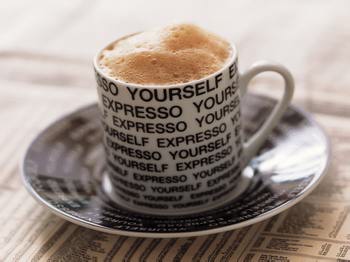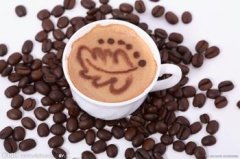On Starbucks Coffee Culture Starbucks International Coffee Co., Ltd.

Starbucks International Coffee Co., Ltd., is the leading roaster and retailer in North America, and its Starbucks specialty coffee is also a well-known brand in the region. Starbucks ranked 88th among the 100 best brands in the world in 2001 by BusinessWeek. Compared with the top brand value of Coca-Cola ($68.9 billion), Starbucks' brand value ($1.8 billion) is a small fraction, but BusinessWeek called Starbucks the "biggest winner". Because in 2001, when the value of many famous brands plummeted (such as Xerox by 38%, Amazon and Yahoo by 31%), its brand value soared by 38% It ranks first among 100 famous brands.
Starbucks was founded in 1971. The company mainly sells coffee beans. It has grown from a coffee retail store in Seattle in 1971 to the most famous coffee chain in the world today. At present, it has stores on three continents, and the latest statistics are 4435. In addition to selling coffee, Starbucks also sells its own brand of coffee sets, music products and candies.
Starbucks shapes the brand, with special emphasis on its cultural taste. One of its value propositions is that Starbucks does not sell coffee, but people's experience of coffee. Similar to the oriental tea ceremony, tea art. The value of tea ceremony and tea art is not to quench thirst, but to obtain some unique cultural experience. Starbucks' success lies in its creation of a "way of coffee" that allows respectable people to drink "virtuous coffee". The name Starbucks comes from an extremely calm and charming first mate in the American writer Melville's novel Moby Dick. His hobby is drinking coffee. Melville has a high position in the history of American and world literature, but Melville does not have many readers, mainly people with good education and high cultural taste. it is impossible for people without a certain cultural upbringing to have read Moby Dick and know about Starbucks. The name Starbucks Coffee implies its positioning of customers-it is not the general public, but people with certain social status, higher income and a certain atmosphere of life.
In order to create Starbucks'"way of coffee", Starbucks creates the unique value of its own brand in products and services. The coffee beans used by Starbucks are from the world's major coffee bean producers and are roasted in Seattle. They are crazy about the quality of their products. Whether it is the raw beans and their transport, baking, preparation, the addition of ingredients, the filtration of water, or the moment the coffee is finally served to the customer, everything must meet the strictest standards and be right. In terms of service, Starbucks requires employees to have the knowledge of coffee and the method of making coffee drinks. In addition to providing quality service to customers, it is also necessary to introduce these knowledge and methods to customers in detail.
Starbucks builds the brand and pays great attention to customer satisfaction. Starbucks classifies coffee beans according to their flavor, so that customers can choose their favorite coffee according to their own taste. The taste is lighter and lively, the fragrance is attractive, and what can exhilarate people is the "lively flavor"; the taste is round, the fragrance is balanced, the texture is smooth, and the mellow is "full-bodied flavor"; it has a unique fragrance and the strong attraction is the "rough style".
In terms of environmental layout, Starbucks strives to make his coffee shop a "third place", that is, a comfortable social gathering place outside family and work, and another "living room" for customers, not only to meet guests, but also to relax here alone. In this fashionable and elegant, luxurious and cordial environment, people relax, get rid of busy work, take a short rest or date, and get spiritual and emotional reward. It can be said that Starbucks' goal has been achieved because a considerable number of customers visit the coffee shop more than a dozen times a month.
On the one hand, Starbucks encourages oral or written communication between customers and between customers and Starbucks employees, and on the other hand, employees are encouraged to share their work experiences at Starbucks. Whether it's living room style decoration, carefully selected decorations and lamps, the hiss of brewing coffee, the snapping of coffee powder from the filter, or the rustling of coffee beans with a metal spoon, it is a familiar and comfortable sound for customers, all setting off a "Starbucks style".
Starbucks people think that their coffee is just a carrier, through which Starbucks transmits a unique style to customers. This style is "romantic". Starbucks strives to turn the customer experience in the store into an inner experience-making coffee beans romantic, making customers romantic, making all feelings romantic.
Starbucks's brand building benefits from its "partner" system. In Starbucks, employees are not called employees, but "partners". That is to say, employed by Starbucks, it is possible to become a shareholder of Starbucks. Starbucks now has about 25000 "partners".
In 1991, Starbucks began to implement "coffee bean stocks". This is a stock option scheme for all employees (including part-time employees). The idea is to make every employee own shares and become a partner in the company, so that every employee is associated with the overall performance of the company, whether it is CEO or any partner, to adopt the same work attitude. To qualify for a stock distribution, a partner must work at least 500 hours in the fiscal year from April 1, an average of 20 hours a week, and remain employed by the company when the stock is distributed the next January. Partners who earn $20, 000 a year in 1991 can exchange more than $50, 000 in cash five years later with their 1991 options alone.
Howard Schultz, Starbucks's current chairman and CEO, owes much of the company's success to the uniqueness of the partnership. "if there is one achievement that I am most proud of at Starbucks, it is the relationship of trust and confidence that we have built among the people who work in the company," he said. "
Schultz believes that the strongest and most enduring brands are built in the minds of customers and partners. In the final analysis, brand is a kind of spiritual alliance formed inside and outside the company (between partners, between partners and customers) and a community of interests with both losses and prosperity. The foundation of such brands is quite solid because they are built on spirit and emotion, not on advertising. Starbucks people have never started to build brands in the traditional sense. Their goal is to build a great company, a company that symbolizes something, a company that attaches great importance to the authenticity of its products and the value of its employees' passion.
Schultz's management style has something to do with his origins. His father is a truck driver and his family is poor, so he understands and sympathizes with people living at the bottom of society. It is said that he had an ambition from an early age-if one day he was in charge, he would not abandon anyone. So he proposed the all-staff stock option scheme. As he once lived at the bottom of society, he firmly believed that wealth could be achieved only through honest and continuous efforts. "Brand management is a lifelong career," he said. Brands are actually very fragile. You have to admit that the success of Starbucks or any brand is not an one-off title and title, it must be maintained and maintained every day. "
It can be said that Schultz's populist thought directly affected Starbucks' ownership structure and corporate culture, which in turn directly led to Starbucks' commercial success.
Starbucks builds his brand through word-of-mouth marketing. Schultz often says that Starbucks built its brand in a way that is not taught in business textbooks. General enterprises do brands, often using a point-to-multipoint "broadcast" model, which is characterized by quick results (of course, quick failure) and high cost. Starbucks uses a primitive point-to-point "narrow broadcast" model that looks rather slow, which is characterized by slow results (and, of course, slow failures) and low cost. "Starbucks' success proves that a multimillion-dollar advertisement is not a prerequisite for creating a national brand, that is, it does not mean that a company has sufficient financial resources to create brand-name products," Schultz said. You can do it step by step, one customer at a time, one store at a time or one market at a time. In fact, this may be the best way to build trust among customers. "
In fact, all traditional religions are spread by word of mouth. Wal-Mart, which is the richest man in the Fortune 500, is also an expert in building its brand by "narrow broadcast".
Important Notice :
前街咖啡 FrontStreet Coffee has moved to new addredd:
FrontStreet Coffee Address: 315,Donghua East Road,GuangZhou
Tel:020 38364473
- Prev

Drinking coffee with less partner and more milk is good for your health.
Many people drink coffee and like to add some coffee companions, so that the coffee tastes more smooth and full-bodied, while many people directly choose instant coffee, which is both convenient and good. However, nutritionists point out that this way of eating may cause harm to human health and is not suitable for long-term use. Coffee companions and even many instant drinks have plant fat powder in their ingredients.
- Next

Scientist coffee, changing blood type is no longer a dream.
An international scientific team has made a breakthrough in the study of blood group transformation, finding two enzymes that can effectively convert type A, B and AB blood into type O blood. An international team led by Henrik Clausen, a scientist at the University of Copenhagen in Denmark, reported in the latest issue of the journal Nature Biology that researchers have found two new glycosidases in bacteria that can
Related
- Beginners will see the "Coffee pull flower" guide!
- What is the difference between ice blog purified milk and ordinary milk coffee?
- Why is the Philippines the largest producer of crops in Liberia?
- For coffee extraction, should the fine powder be retained?
- How does extracted espresso fill pressed powder? How much strength does it take to press the powder?
- How to make jasmine cold extract coffee? Is the jasmine + latte good?
- Will this little toy really make the coffee taste better? How does Lily Drip affect coffee extraction?
- Will the action of slapping the filter cup also affect coffee extraction?
- What's the difference between powder-to-water ratio and powder-to-liquid ratio?
- What is the Ethiopian local species? What does it have to do with Heirloom native species?

